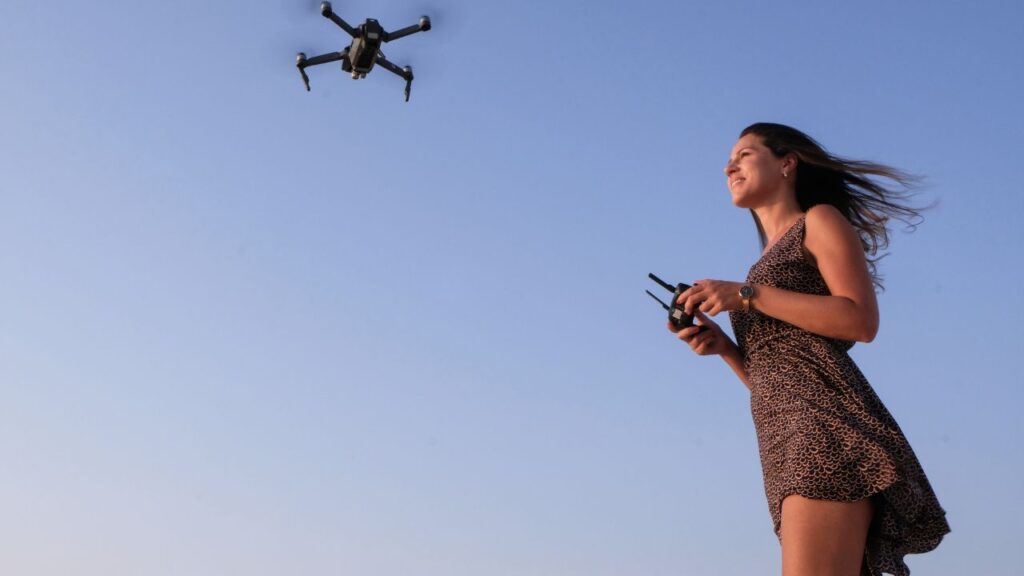
Want to get a new drone but don’t know where to start? This drone buying guide includes all the basics you need to know. Whether you’re a beginner looking for your first drone on a budget or an experienced flyer looking to refresh your memory, you’ve come to the right place!
Are you still being recommended a DJI Spark that is actually no longer made? If you’ve stumbled across some drone guides that claimed to be a 2024 edit but only to find a lot of outdated information, you are not alone. But I guarantee you that this guide is genuinely created in 2024.
I spent 3 months researching the FAA, official drone brands, and many other technical sites to dig up all the essential information that drone buyers need. No advertising, no technical jargon, just knowledge and insight.
The work of 3 months can translate into a long piece. So if you’re busy, skip to the section that guides you with a decision tree to buy your first drone. You should be able to make a decision that you won’t regret within a few minutes.
But I still recommend you read through the whole drone buying guide. By the end, you’ll be as if you’ve taken an intensive course. Let’s get started!
Table of Contents
#1 Quick Tips for Beginners Before Studying This Drone Buying Guide
- There are 4 types of drones – Toy Drones, Camera Drones, FPV (First-Person View) Drones and Professional Drones.
- Opt for a cheaper drone to learn the essential skills before investing in an expensive drone.
- Most drones are easy to repair after a crash by replacing parts. But you risk losing it altogether if you don’t follow these safety rules.
- Flight time is limited by battery life and ranges from 10 to 30 minutes. You will need extra batteries for a decent flying experience. Don’t forget to factor this into your initial budget.
- You don’t want to risk losing your drone. Learn to stay within signal range before attempting any challenges.
- If you don’t know which brands or models to choose from, narrow your options down to DJI. Globally, 7 out of 10 drones sold are made by DJI.
- Leave professional equipment to the pros. A drone with a few batteries and you’re good to go!
#2 Types of Drones
Common Terms:
| Drone | A flying robot that can be controlled remotely or fly autonomously. |
| UAV | Unmanned aerial vehicle. The same as a drone. |
| Quadcopter | A type of drone with four rotors. Generally, the quadcopter is interchangeable with drone or UAV, as most drones on the market are quadcopters. |
| RTF | Ready-To-Fly drones do not need any extra assembly before you fly them. Most drones fall into this category. |
| ATF | Almost Ready-to-Fly drones are usually built in such a way that they don’t need much assembly. |
| DIY | A drone that advanced flyers build themselves from scratch. |
How Quadcopters Fly:
Quadcopters have 4 rotors, each controlled by its own motor. Two of them rotate clockwise while the other two rotate counterclockwise. This setup allows the drone to fly in different directions, including pitch, yaw, and roll.
Visit our detailed instructions here If you want to know more about how a quadcopter flies.
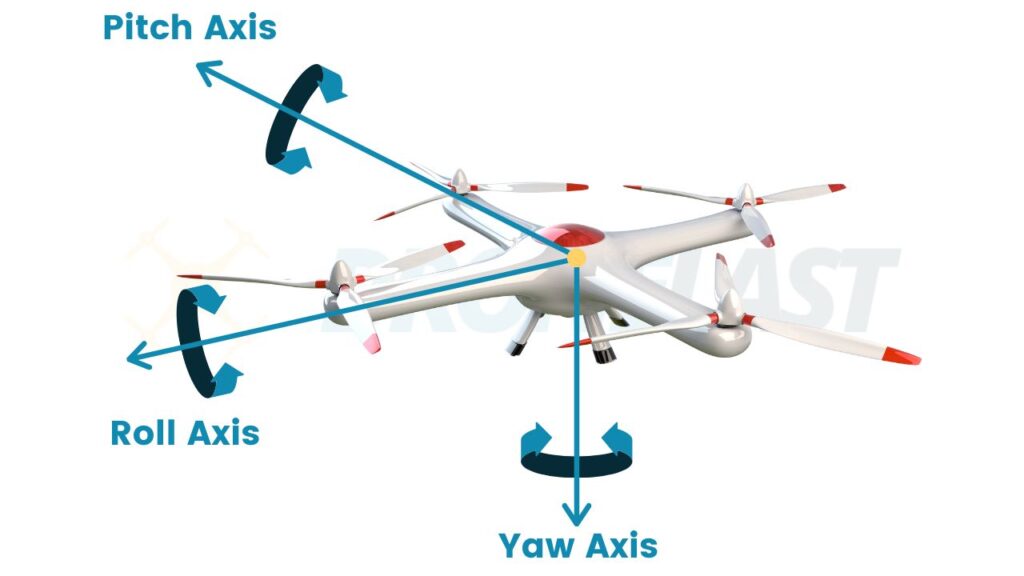
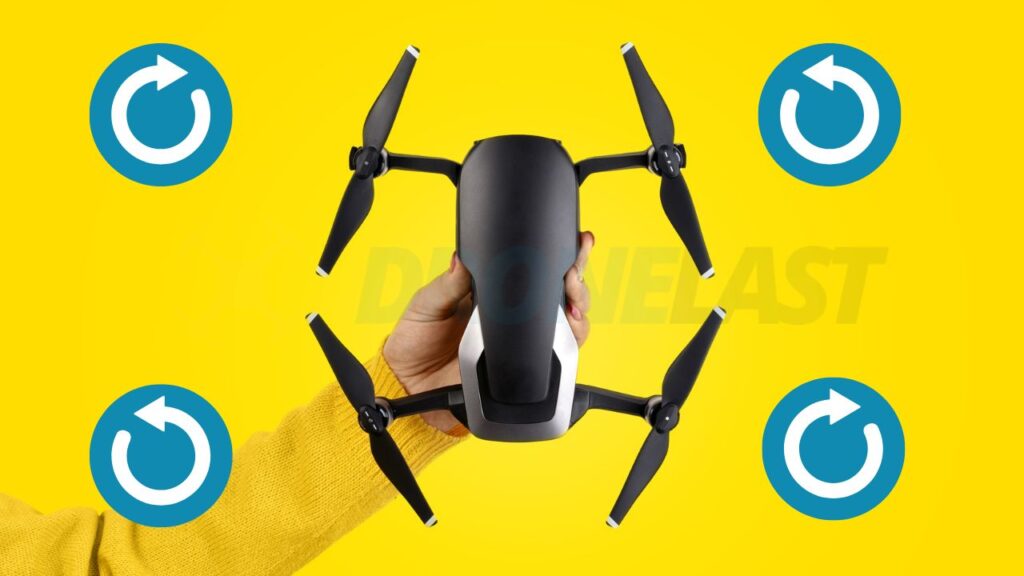
Quick Comparison of 4 Drone Types:
| Toy Drones | Camera Drones | FPV Drones | Professional Drones | |
| Price | ★☆☆ | ★★☆ | ★★☆ | ★★★ |
| Control Difficulty | ★☆☆ | ★★☆ | ★★★ | ★★★ |
| Video Quality | ★☆☆ | ★★★ | ★★☆ | ★★★ |
| Battery Life | ★☆☆ | ★★☆ | ★☆☆ | ★★★ |
| Range | ★☆☆ | ★★☆ | ★☆☆ | ★★★ |
| Speed | ★☆☆ | ★★☆ | ★★★ | ★★☆ |
Toy Drones
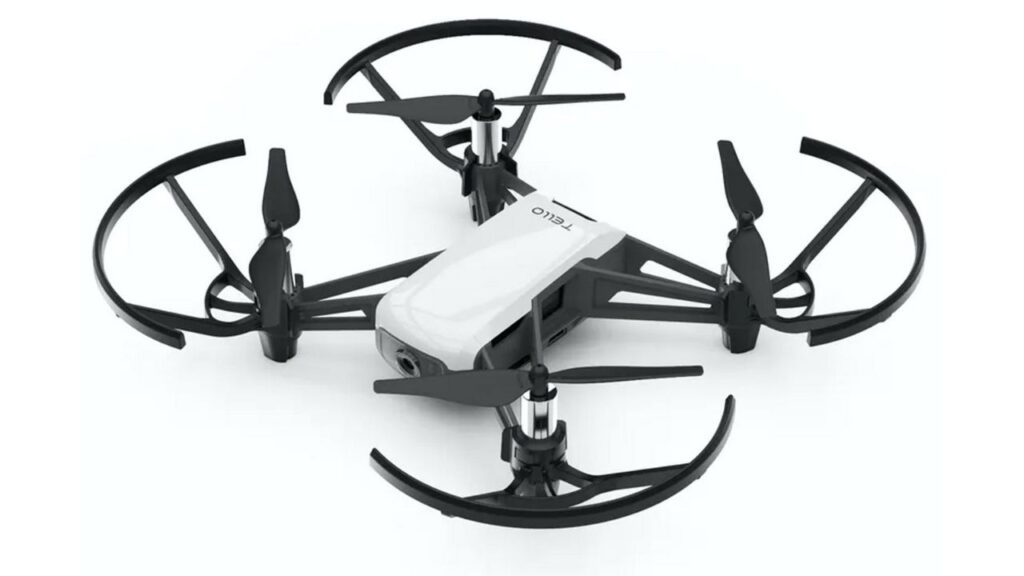
Toy drones have many alternative names, such as beginner drones, kid drones, mini drones, micro drones, or nano drones. Although there may be some slight differences between them, in most cases they are interchangeable.
But I don’t like calling them beginner drones as they are not the absolute best choice for beginners, which I will explain below. They cost less than $150, so they are tempting for beginners to start this hobby and also for crashes 😜…
Pros:
- Small and light. They are very easy to control and you can easily learn to do tricks in the air.
- They are durable given their small mass. Consider the difference between an ant and an elephant falling from the second floor to the ground. A lightweight drone is an ant.
- They are the best drones to fly indoors because they are smaller in size and noise. They won’t cause serious damage after hitting something, which is almost inevitable when flying indoors.
- They are cheap to repair. And it wouldn’t cost much either if you crash the drone completely or lose it.
Cons:
- Battery life is usually less than 15 minutes. You may need to buy multiple batteries for a decent flight session.
- No 3-axis gimbal stabilisation (I will explain this feature later). No 4K video quality. You will have to compromise on video or image quality. The images you capture won’t come close to the spectacular drone footage you see on YouTube. They will not be something you can show off on social media either.
- You may not feel confident flying a toy drone even if the wind becomes slightly stronger.
Should Beginners Buy a Toy Drone?
The reason I say a beginner shouldn’t necessarily buy a toy drone is that you could end up wasting more money. Anyone flying a toy drone will want to upgrade to a higher-end model quickly – about 3 months after purchase.
Although you could sell the used drone, that would be too much hassle and the resale price is usually low. The fact is, most people prefer to give them away to kids or keep them as a second drone that they never touch again.
So if you are confident that it won’t be your short-lived hobby, you can consider a low-end camera drone that costs around $500.
Camera Drones
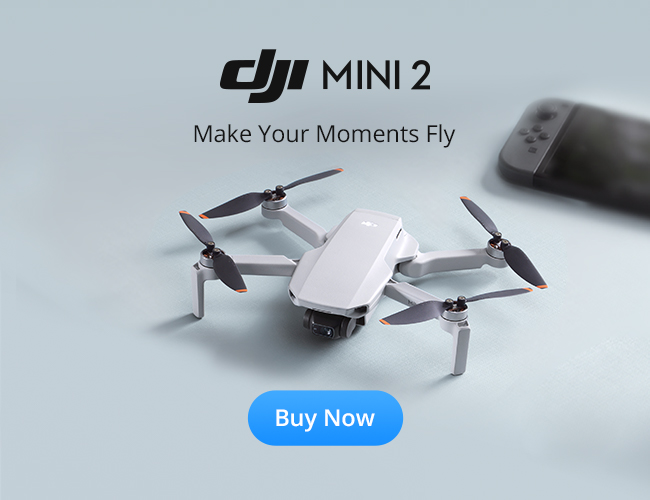
Many beginners vacillate between DJI Mini 2 SE (one of DJI’s cheapest models) and DJI Air 2S (DJI’s popular model, known for its excellent value for money).
These days, you don’t have to spend absurd amounts of money to get a decent camera drone that lets you take stunning shots like these:
Camera drones are the most common drones on the market. They are probably the type of drone you are looking for. They usually cost between $500 and $2,000. You can now get a decent camera drone that will do a good job for several years at a reasonable price.
Camera drones are easy to operate and control. You can start shooting immediately without any prior training or complex configuration. It is possible for a beginner to get some great shots.
Although it is friendly to start, you will have to put in the effort to master it. Practise and attend training courses to really master drone videography. Also, camera drones are designed to take great shots instead of performing tricks in the air. So you won’t be able to show off some fancy tricks even if you opt for a higher-end model.
Camera drones used to be an add-on to professional photographers. But they have now earned their place in photography and videography. Aerial photography now dominates many competitions. For example, the win at RHS Photographic Competition 2021 goes to an aerial shot of a flower garden in the UK.
Important Specs of Camera Drones:
| Camera | Most drones come with a built-in camera that you can add filters on. You can change lenses on some models but you cannot change the camera. You can mount a GoPro on a drone, but the built-in camera is already very good on many models. |
| Weight | From under 250g to over 1,300g. Drones under 250g do not need to be registered or can be registered easily with the authority in countries like the US, UK, Canada and China. Heavier models have better stability in windy conditions and usually more advanced features. |
| Size | Drones under 250g are small. Smaller drones are easier to transport. People usually use small drones more often than big advanced machines. |
| Speed | You don’t need a fast drone to take excellent pictures. Yet, drones with sports mode, which increases the speed of the drone, allow you to get exciting shots when filming extreme games or races. |
| Maximum Altitude | From 3km to 6km above sea level. You can’t fly too high anyway, as the law requires you to keep your drone in sight. |
| Flight Time | From 10 minutes to 30 minutes. Strong winds will result in shorter battery life as the drone uses energy to stabilise itself. It is common to swap the battery to extend the session rather than going home and recharging the battery. |
| Wind Speed Resistance | The greater the resistance, the more stable it is in high winds. |
| Gimbal | A gimbal is a pivoting mount that allows an object to rotate along a single axis. A common 3-axis gimbal allows a camera mounted on it to be independent of the drone’s movement. These 3 axes are referred to as Pitch (up and down), Yaw (left and right), and Roll (clockwise or counterclockwise). A 3-axis gimbal will give you a much more stable shot. |
| Camera Sensor | From 1/1.3″ to 1″ CMOS. A sensor with larger pixels collects more light, which in turn improves image quality. It is a crucial element for high image quality but is always overlooked by many buyers. |
via GIPHY | How a Gimbal Works
Smart Features of Camera Drones:
Smart features are those extra functions that make flying easier with advanced technology. They used to be available only on high-end models. But now you can find them on many entry-level models that help beginners take great shots.
| Return to Home | Return to the starting point autonomously if your drone’s battery is low or you lose signal. You can also trigger the return voluntarily. |
| Avoid Obstacles | Intelligently avoid obstacles in flight. The more sensors a drone has, the better its evasive capabilities. |
| Follow Me | Track a target without piloting. It uses GPS to locate the controller that the pilot has in hand. It also uses visual recognition to detect a specific object even when the object is moving. |
| Flight Path | Before the flight, use an app to set a flight path. The drone will make trips on its own via GPS. It can also be combined with the “avoid obstacles” feature. You need to register these drones with the FAA. Like using autopilot in a car, you still need to watch the autonomous drone. Take back control anytime to avoid accidents. |
Racing Drones
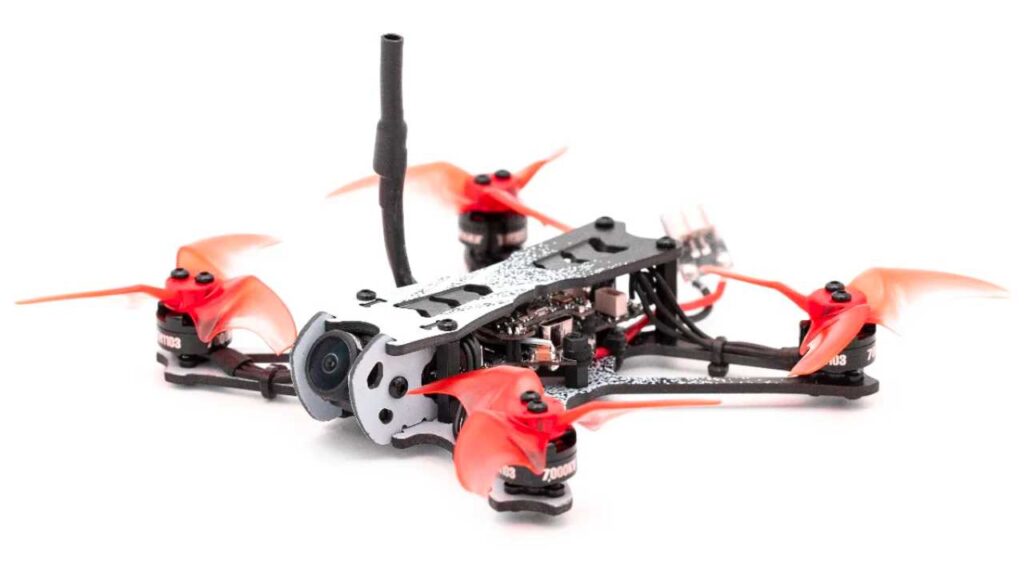
Racing drones that can fly at up to 70 to 100 mph can give you an unbeatable adrenaline rush. If you don’t have the patience to spend hours adjusting the angle of your drone to get a wonderful shot, go racing!
Racing drones are small and lightweight. They are designed for high speed and agility. Users wear an FPV (First-Person View) headset to see through the lens on their speedy drone. All racing drones are FPV drones. But not all FPV drones are racing drones, as you can always put on a headset to control your slow camera drone.
In a drone competition, like above, flyers navigate their drones through a course. It usually has lots of tricky setups and obstacles to make it more challenging. You can expect aviators to crash their drone frequently. Thus, racing drones are designed for racing and crashing.
Cheaper models, which start at around $100, usually need a lot of setups before they can fly. RTF (Ready-to-Fly) drones are on the higher end and can cost up to $700. Many racing drone players love to build their own drones. They can tailor them to their characteristics and shed all unnecessary weight.
The number of racing gamers is growing so fast that conglomerate DJI released its first FPV drone in early 2021. This move has lured more people to this exciting hobby as DJI drones are easy to use.
But beware: even though the FPV videos are enticing, these beasts are not for beginners. Crashing these fast drones can not only result in loss of the drone but also serious damage to property and people.
When choosing your first drone, be patient and opt for a toy or camera drone. Imagine what would have been if you had driven a Lambogini on your first ride…
Professional Drones
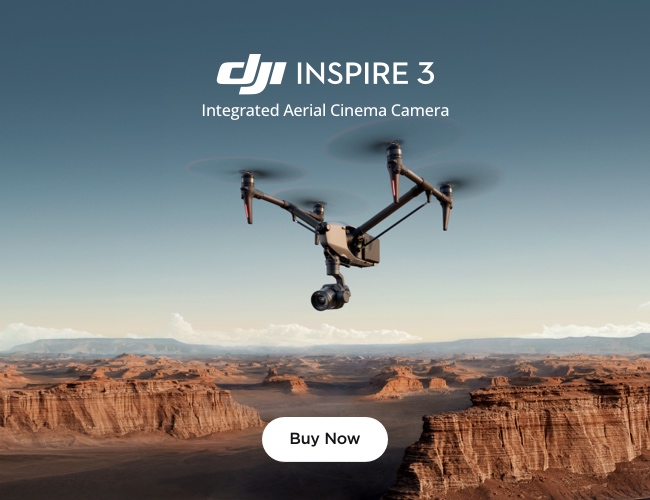
Professional drones are those high-end machines that are used in various businesses. If you are experienced enough and want to earn good money from your drone, go for professional drones.
Film production is the industry that uses drones very well. It saves a lot of budgets to get excellent aerial footage with drones than renting a helicopter. A professional camera drone can cost anywhere from $2,500 to $20,000 or even more.
What makes these drones professional? They are much more stable and can carry a heavier camera. Professional movie drones allow you to install your own camera and a gimbal system. This allows exceptionally good video quality. Some models can even carry RED Komodo, a popular professional camera for filming.
Even if you can afford them, they are expensive to repair and find replacement parts. They are also more difficult to fly due to the complexity of controlling multiple aspects simultaneously, such as throttle, yaw, pitch, and roll. Each professional drone has unique features that require understanding for effective operation.
You may have to rebalance the rig for each camera setting. The learning curve is not like jumping from a toy drone to a camera drone. The learning curve can be about 10 times harder. So, unless you are using the drone for serious business, stick with your camera drone. Use it to its fullest potential.
Professional camera drones are just one example of professional drones. Many professional applications need a dedicated drone to get the job done.
Major Applications of Drone
- Film Production
- Video production for advertising, marketing and events
- Real estate sales
- Agriculture
- Land surveying
- Inspection
- Vertical scanning
- Rescue
- Law Enforcement
- Journalism
#3 DJI Drones Comparison

If you have no idea which drone to buy, opt for DJI drones, as most beginners around the world do.
DJI is a Chinese drone company. It offers drones with excellent quality and stability at affordable prices. DJI is the pioneer that brought drone technology to the public. It now dominates the market with 70% of the market share.
Buying a drone is not like listening to music. With music, you can choose any indie you like, and it’s all a matter of personal taste and style.
With drones, you run the risk of losing firmware updates or bug fixes if choosing a small brand. Going mainstream allows you to get support from all DJI flyers around the world. You can find unlimited resources on the internet. You can join communities on social media.
DJI Beginner Drones
- Tello is made by another drone company called Ryze, but it uses DJI technology. It’s cheaper than any of DJI’s entry-level models, but the camera quality reflected that. It’s more of a toy than an average camera drone.
- DJI drones are famous for their ease of use. They are all RTF (Ready-to-Fly) drones. You can see through the drone camera with a live stream to your smartphone.
- If your DJI drone is disconnected for too long or the battery is low, it will return home on its own. If your smartphone dies, you can still fly it with the remote. If the remote dies too, the drone autonomously returns home. If it doesn’t know where to return to, it will land slowly.
- Tello, Spark, and the majority models in Mini series don’t have sensors to avoid hitting obstacles. Other models have.
- DJI FPV and DJI Inspire are too advanced for beginners. Although DJI FPV claims to be beginner-friendly, it’s just too fast. If you don’t have much experience, go for the average camera drones.
- Tello is a toy. Spark is old. Most beginners opt for either the DJI Mini 2 SE ($299) or the DJI Air 2S ($799).
DJI Mini 2 SE vs DJI Air 2S
Most beginners choose between these two models despite a significant price difference. Here is why:
- Hobbyists do not need to register any drones from DJI’s Mini series with the FAA as they all weigh less than 250g. It saves you the hassle of taking the difficult course and exam. That’s also the biggest selling point of the Mini series.
- Mini 2 SE fits in your pocket and is handier than Air 2S.
- Air 2S has a larger CMOS sensor (1-inch) which gives you more accurate colours with richer details. This is the key factor that differentiates the image qualities of both models. Mini 2 SE has a 1/2.3-inch CMOS.
- Air 2S captures still images at up to 20MP, compared to 12MP of Mini 2 SE. It gives you more flexibility in post-processing like cropping, retouching and compositing images.
- Air 2S shoots 5.4K videos at 30fps or 4K videos at 60fps, compared to 2.7K videos at 30fps of the Mini 2 SE. The higher the number of frames, the smoother the video, especially when filming a moving object. It also allows you to create a smoother slow-motion movie.
- Air 2S has more sensors to help prevent crash. Mini 2 SE only has downward-facing sensors to help with landing.
- Despite all the advantages of the Air 2S, the Mini 2 SE is one of the best affordable DJI drones capable of shooting in RAW. To be honest, beginners often hardly notice the image difference between the Air 2S and the Mini 2 SE. Some people may dislike 2.7K videos and consider 4K a necessity. However, if you’re looking for a beginner-friendly drone with 4K capabilities, the Mini 3 will cost you over $400. In this context, the Mini 2 SE offers unparalleled value for money, unless you intend to closely inspect your aerial videos on a 50-inch 4K TV.
A Complete Comparison of DJI Drones:
| Model | Price | Weight | Flight Time | CMOS (Larger Better) | Video Res | Photo Res | Obstacle Sensing |
| Ryze Tello | $99 | 80 g | 13 mins | 1/5” | 720p 30fps | 5 MP | Down |
| DJI Mini 2 SE | $299 | 246 g | 31 mins | 1/2.3″ | 2.7K 30fps | 12 MP | Down |
| DJI Mini 3 | $469 | 248 g | 51 mins | 1/1.3″ | 4K 30fps | 48 MP | Down |
| DJI Mini 3 Pro | $759 | 249 g | 47 mins | 1/1.3″ | 4K 60fps | 48 MP | Down |
| DJI Mini 4 Pro | $759 | 249 g | 45 mins | 1/1.3″ | 4K 100fps | 48 MP | All |
| DJI Air 2S | $799 | 595 g | 31 mins | 1″ | 5.4K 30fps | 20 MP | Front Back Down Up |
| DJI Air 3 | $1,099 | 720 g | 46 mins | 1/1.3″ (with tele cam) | 4K 100fps | 48 MP | All |
| Mavic 3 Classic | $1,599 | 895 g | 46 mins | 4/3″ | 5.1K 50fps | 20 MP | All |
| Mavic 3 Pro | $2,199 | 958 g | 43 mins | 4/3″ (with tele cam) | 5.1K 50fps | 20 MP | All |
| DJI Avata | $629 | 410 g | 18 mins | 1/1.7″ | 4K 60fps | 48 MP | Down |
| DJI FPV | $999 | 795 g | 20mins | 1/2.3” | 4K 60fps | 12MP | Front Down |
| Phantom 4 Pro V2.0 | $1,599 | 1,375 g | 30mins | 1” | 4K 60fps | 20 MP | Front Back Sides |
| Phantom 4 RTK | $6,600 | 1,391 g | 30 mins | 1″ | 4K 30fps | 20 MP | All |
#4 How to Choose Your First Drone?
Trust me, no matter how much research you do, you will end up choosing a Mini 2 SE or Air 2S. You might consider other models in the Mini series as well. But if you go for anything higher than the Mini 2 SE, you may as well get an Air 2S, which is an upgrade to a mid-level series.
Follow the decision tree I put together. You can skip all the research and come to a decision you won’t regret.

- If you only have $100 that you can comfortably spend on a drone, choose Ryze Tech Tello.
- If you have around $400, the best option for you is the DJI Mini 2 SE. But ask yourself some honest questions – How often will you fly? How easily will you give up this hobby? If you’re not sure whether you’re serious about this new toy, consider Tello first.
- If you have $800 or more at hand, the choice is all yours. Take whatever you like. But wait, ask yourself the same question as above. If you actually don’t have time to fly, take Tello. You can save the remaining $700 for other hobbies you are keen.
- If you’re serious, ask yourself one more question: what benefits does the drone give you, aside from just a hobby? Some of the benefits are:
- Will the drone bring your family members together? Will you spend quality time with your partner or kids with it?
- It fits in with your other hobbies, such as hiking, biking, fishing. For example, you may want to take a drone with you every time you go hiking. Or you may want to take some shots of yourselves when you go fishing with friends.
- Are you interested in using a drone to make money, such as being a YouTuber? Or putting some great movies on YouTube to monetise? Do you plan to start a small business using drones?
- Will drone skills be beneficial to your job? For example, are you already an influencer or producer who shoots videos? Are you a journalist or surveyor who can use drones for work?
- Are you interested in a drone competition? Will you give it a try once you’ve gained enough skills?
- Will the drone bring your family members together? Will you spend quality time with your partner or kids with it?
- If you have two or more check marks on the benefits, choose the Air 2S! You have a much higher chance of sticking with the hobby and getting serious about it.
That’s my philosophy when choosing a beginner drone. At the end of the day, it really depends on your personal needs and preferences. If you barely have time to fly, but can comfortably fort out $800 for adrone, and are interested in taking some stunning shots to wow your friends, then you may well choose the Air 2S. I have a friend who is just like that – a busy accountant who wants to take a breath besides his 9-to-5 work.
Best Places to Buy Drones
DJI official store and Amazon. These two are the most reliable online stores and can deliver to most parts of the world.
They have a transparent refund and return policy. You can rest assured to receive a drone with perfect conditions.
Should You Buy a Used Drone?
It’s not easy to find a used drone that is reasonably priced and that you can feel reassured. It’s best to look for one that’s still under warranty like the DJI Care.
A drone is made to crash. It’s likely that the used drone you’re buying has crashed before. The flaws can sometimes be hardly noticeable, especially if you’ve never flown a drone before.
Thus, it’s more reassuring to buy one with a warranty so you can always take it back to the manufacturer to get it fixed. If the price doesn’t make much of a difference, go for a brand new drone. It will also save you travel time and communication hassle.
#5 Drone Accessories and Care Services
There seems to be a lot of accessories you can buy for a drone. But don’t worry, you really don’t need that much if you choose an RTF (Ready-to-Fly) drone. Spend more time practising your skills first.
With a smartphone and a drone, you are good to go. Yet, there are some essential parts that you can consider buying.
Drone Batteries
You may need extra batteries even if you have a tight budget.
Due to the technological limitation, a battery can only support a flight of about 30 minutes. And it takes 90 to 120 minutes to fully charge. So the only way to fully enjoy your flight is to bring extra batteries. You can swap them out between flight sessions.
Usually, you need at least one more battery, but more people would buy at least two extra.
Drone Propellers
The next important accessory is propellers. Drones are designed to survive a crash, but they mainly protect the expensive parts like CPUs, motors, and transmitters. Propellers are the easiest to break, which is why most drones come with a few extra.
If yours doesn’t come with any spare, get at least 2 extra pairs of propellers. If a drone crashes, it will likely break one side of the propellers, which involves 2 propellers.
Since a quadcopter has propellers that rotate clockwise and counterclockwise, make sure you get both as replacements.
Other Accessories
- Drone Cases or Backpacks – Transport your drone, spare batteries, and accessories safely with shock-absorbing foam inside.
- Propeller Guards – A plastic cage that surrounds propellers to protect them in the event of a crash. It is already built into some mini-drones.
- Camera Filters – Filters help experienced photographers take better pictures. Some filters can reduce reflections that can’t be removed in post-processing. Some allow for longer exposures or wider apertures. Some can enhance the contrast of an image.
- LED Bands or Strips – Colour strips make your drone more visible in the sky and add some personality.
Drone Bundles
For many drones, you can pay extra money to get a bundle. This includes some accessories that give you good value for your money.
If a bundle costs around $100 but offers a few more batteries, consider it a good deal. Original batteries can be expensive.
DJI Care and Extra Warranty
Some drone manufacturers will offer you the option to extend the one-year warranty. Some even offer a privileged care service. Beware that the original warranty does not usually cover man-made damage. So, most flyers would do the warranty upgrade.
DJI Care, for example, allows drone owners to get a new drone with a relatively small amount of money if they have lost their drone or their drone is so broken that it can’t be repaired.
I would recommend purchasing the extended warranty. 99% of flyers experience drone crashes and you will be glad you have it covered under warranty.
Make sure you activate your extended Care service soon after you purchase your drone. There is only a 48-hour activation window. It is not possible to activate your extended warranty after you have crashed or lost your drone.
#6 Drone Registration and Law
You should check with the authority in your country to see if you need to register your drone. Check out our complete Drone Registration Guide that goes through all the registration steps.
In the United States, if your drone weighs less than 250g and is for recreational purposes, you can take The Recreational UAS Safety Test (TRUST) for free and do not need to register it. But if you are flying for business purposes, you will need to register your drone under Part 107, regardless of its weight. This way, you will have to study the aviation laws and rules and take an exam to get the certificate.
Please note, if you are monetizing your aerial photos or videos on a YouTube channel and have a small drone that weighs less than 250g, you will still need to register under Part 107 as it is not considered recreational.
Once registered, the registration number must be affixed to the drone. This can be a simple sticker or shipping label placed under the battery, along with the owner’s name and number. Starting from 14 March 2024, your drone must also comply with the Remote ID rule, which essentially means you have to upgrade your firmware. For drones that are too old, an external device might be needed.
After you have registered your drone, you still need to be aware of the restrictions. The FAA has a full list of safety guidelines for aircraft.
There are also restrictions on where you can fly. For example, You cannot fly higher than 400 feet. You cannot fly over emergency areas such as traffic accidents or forest fires. You cannot fly over national parks or in restricted airspace.
Also, you cannot fly within 5 miles of an airport without notifying air traffic controllers. Federal, state, and local regulations can vary. If in doubt, check with the respective organisations. You don’t want to end up with an $182,000 fine for a couple of merry flights.
B4UFLY is the FAA’s official mobile app that helps you check where you can and cannot fly. Airmap is another free tool that gives even more details of your airspace. AMA clubs have all the fields listed that they use, which you may refer to.
#7 Drone Safety
A drone can be destructive, even if it is not used militarily. Examples below:

Because of the height and speed it can reach, a drone crash can result in serious injury or damage, which in turn can result in a large fine or even imprisonment.
Also, since you will most likely have your drone registered, it will have your name and registration number on it. It is not easy for you to escape a crime that you have committed.
Therefore, prepare well before flying! Here is a quick guide to everything you need to know.
What to Do Before You Fly a Drone?
- I know, reading manuals is boring. Everybody thinks they can learn by start flying straight away. But reading through the manual before flying your drone for the first time is a must.
- It’s not just about familiarizing yourself with the controls and settings but also the safety precautions you should follow.
- Watch some videos on YouTube to get a feel for flying. You can search for your drone model and there will be a lot of related videos. If you are getting a DJI model, check out their official tutorial channel.
- Check the drone before you fly. Make sure the battery is fully charged and the parts and propellers are intact.
- Check the weather before you fly. You don’t want to fly on a rainy day or risk poor visibility on your first flights.
- If you don’t know the place you want to fly, check it out on Google Map street view. Beware of cable towers, wires, or anything else that might spoil your happy flying.
What Should Be Considered When Flying a Drone?
- Be careful when flying, especially when using a drone for the first time or trying out a new drone.
- Make sure you land before the drone’s battery runs out.
- Respect privacy. If you fly too close to an apartment, house or office building, someone might feel uncomfortable. They might misunderstand your intention even if you are not filming them.
- Drones can be loud, disruptive, and even scary to those who are near their flight path. If someone asks to stop flying, be reasonable and polite.
- Make sure there are no children or pets around before taking off, as they may be attracted to your drone and run to it.
- Fly your drone below 400 feet.
- Keep your drone within your line of sight.
- Never fly near other planes, especially near airports.
- Never fly over groups of people, public events or stadiums full of people.
- Never fly near emergencies such as fires or hurricanes.
- Be aware of FAA airspace restrictions.
- Many people want to take the best professional, fancy pictures and try to risk something they can’t handle. Avoid! Always put safety first.
Places to Avoid for Drone Beginners
- Avoid flying under bridges.
- Watch out for power lines.
- Don’t fly near trees as you may not be able to see some branches.
- Don’t fly over a children’s playground.
- Don’t fly over bodies of water. You will not be able to save it.
- Don’t fly in residential areas as they are densely populated.
How to Improve Drone Pilot Skills?
- Practice makes perfect. Many people start out flying every day, but then let it go when they run out of passion. Practice more and pursue your own fun.
- There are many courses you can take to improve your skills. The FAA and your drone brand’s official website should be your go-to resource for learning about drone techniques and regulations. Don’t forget to check out Drone Last for new tips and trends!
- The AMA should be the best place for you to join enormous drone communities and improve your skills as a pilot by learning from others.
Drone Insurance
If you are a frequent flyer or use drones commercially, you should buy insurance. Drone liability insurance covers damage to power lines, buildings and people with limits over $1 million. The annual rate is $500 to $750.
#8 How Can You Get the Most out of a Drone?
Many people start their drone journey because of some great aerial footage they’ve seen on YouTube. Some are simply fascinated by gliding across the sky. Remember, there are a lot of things a drone can bring you if you persevere.
Unique Photo and Video Perspective
Many drone enthusiasts are also photography enthusiasts. It’s relatively easy to get great shots with drones. They save you a lot of trouble getting into difficult places to get stunning shots.
In the past, you had to have a certain level of experience in photography, and then move on to drones for advanced aerial photography. But that’s no longer the case.
Many start their photography or video journey with drones. They hone their skills in post-production software like Adobe Lightroom, Premiere and Final Cut Pro.
Socialise
Whether you’re going out, meeting new friends, or hanging out with family. With a drone, you don’t have to go to a fancy place but can still have a great experience. Your drone is also a driving force that makes you want to get outside and look for beautiful places.
Plus, you can meet a bunch of friends on your drone journey, in the social media community or in real life.
Earn money
You can sell footage and images online. You can also sell a photography service to others, such as weddings or events, on a freelance basis. Or you can start a monetized channel that features your drone footage.
If you’ve accumulated enough skills, read how to make money with real estate drone photography here.
Career as a Drone Pilot
If you keep this up and are serious about it, you can take academy courses, earn flight hours, improve your skills, and become a professional drone pilot.
Drone pilots are in demand in many fields and the opportunities are endless.
Think back to when the DSLR had just been introduced to the public. There was a flood of new job opportunities! Although more and more people are getting into the drone market, it is still relatively new. It’s too early to say it’s too late to get started!
What to Do Next?
Now you should know more than you need to buy your own drone. I recommend opening a “Drone” folder in your bookmark. You will be looking for more and more information about this exciting hobby. Make sure you bookmark Drone Last as well. Happy flying!

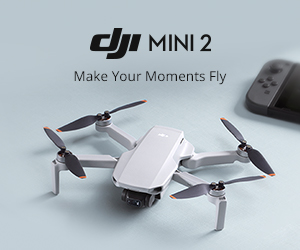

It really helped when you elaborated on buying drones for the first time and what to consider first. Last week, I heard that my brother’s interested in getting a drone to help him improve his photography skills, so I’ll be sharing your buying tips with him right away. Thanks for the information on checking a drone’s battery life before choosing one.
Hey Eli, I am glad my article helps! If you or your brother have any questions about drones, let me know and I will get back to you asap. Otherwise, enjoy flying!